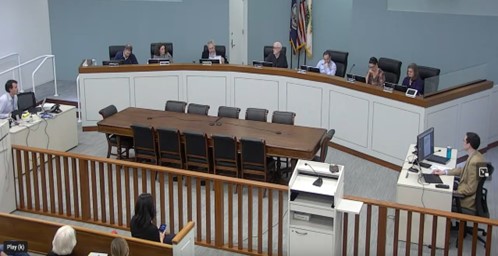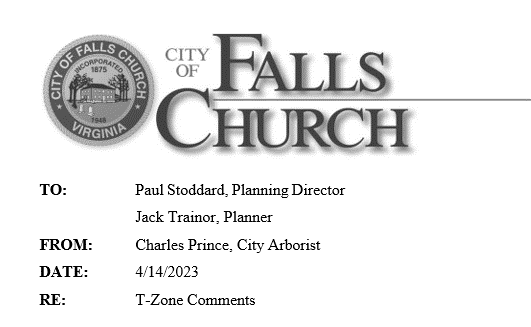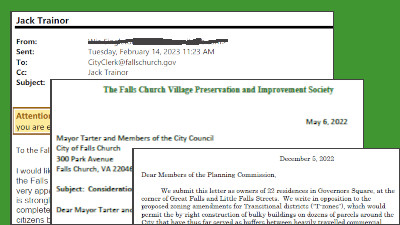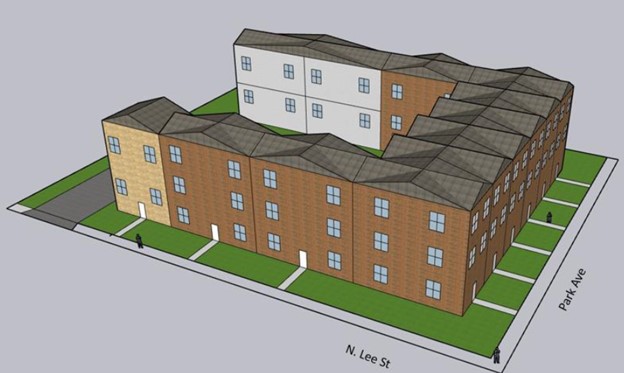New T-Zone Ordinance’s Impact On Historic Properties Begins
Historic home owner explores development with HARB
The T-Zone ordinance approved September 26, 2023, is already having an impact on historic properties located in the City’s transition zones. Kent Finnerty, owner of the historic O’Bannon House, came before the Historic Architectural Review Board (HARB) one month later to discuss adding as many as nine dwelling units to his property located at 258 North Washington Street.
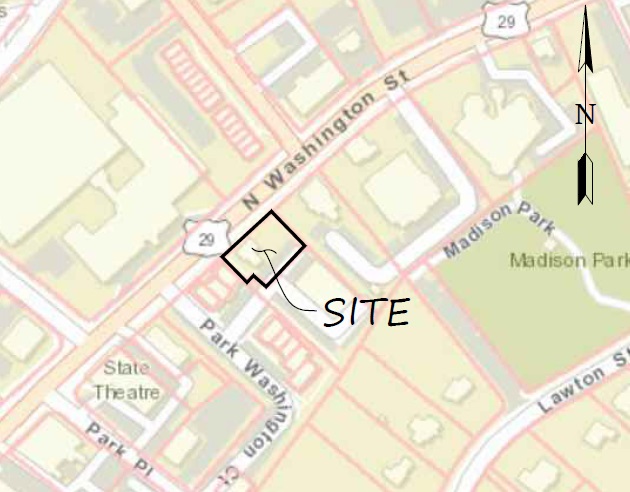
Taking HARB’s temperature
Though he presented no specific plans for the board’s review at its October 26, 2023, meeting, Mr. Finnerty said City Planning Division Planner Jack Trainor suggested that “everything is possible.”
Mr. Finnerty suggested he might upgrade the 1874 structure and add eight to nine townhouses to the existing 9,410 square foot lot (.22 acres). He noted that the historic house is located in one corner of the otherwise open lot, and the property includes nine existing parking spaces (site plan below).
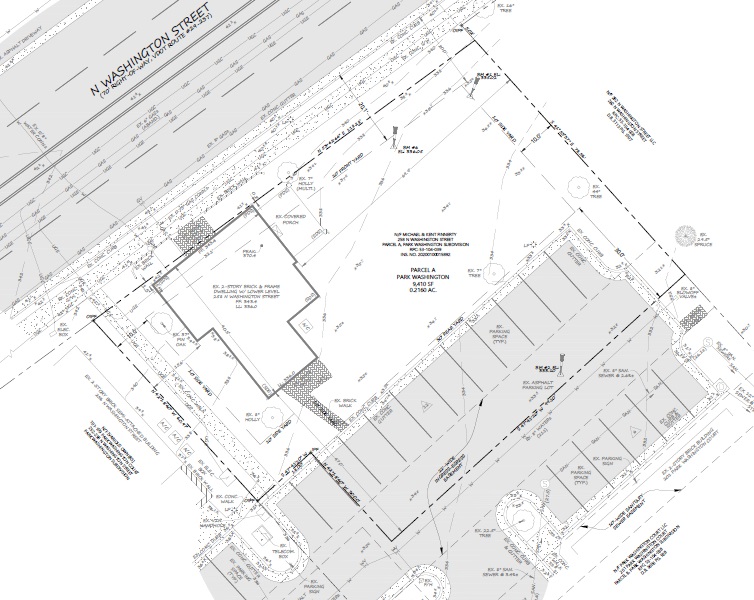
Mr. Finnerty explained that he wanted “to take HARB’s temperature regarding the direction” he and his architect should pursue with this redevelopment. He asked specifically whether the HARB would approve the removal of the porch and the one or two additions to the house that his architect estimated were built in the 1920s or 1930s.
Preserving the historic properties
While the HARB made no commitments, Member Cinda Rose said the board’s primary desire is to preserve the historic structure and maintain its architectural integrity in keeping with the HARB’s role to review applications for permits to demolish or move protected structures in the historic district, which is a zoning overlay district of the entire City.
Per the City’s website, “Historic structures are those built as residences during or before 1910, and any other structure expressly protected by the ordinance. Historic structures may not be razed or removed without a permit approved by the HARB. For alterations of historic structures, the HARB makes recommendations only.”
No input from the HARB or Historical Commission
Ms. Rose took the opportunity presented by the discussion of the O’Bannon House to note that the HARB was “never invited to comment” on the T-Zone ordinance, now scheduled to take effect in January 2024. As a result, the board along with the Historical Commission communicated proactively their concern that the four historic properties zoned T-1, including 258 North Washington Street, would be at risk under the new code.
In an August 30, 2023 letter to the City Council and the Planning Commission, the HARB and the Historical Commission wrote: “To ensure that the preservation of these structures is properly reviewed and vetted, we ask City Council to refer the revised ordinance to the Historical Commission and the Historic Architectural Review Board for formal review and commentary. Given the currently proposed T-Zone changes with their “by right” development allowances, such review would permit some additional time to examine preservation incentives and other alternatives for these properties. We ask the Planning Commission to support this recommendation.”
While the HARB and the Historical Commission sought to work on ways to protect these structures, that never happened, despite repeated requests from Mayor David Tarter, Council Member David Snyder, and several citizens. The ordinance was approved last September without the board’s and commission’s substantive input.
Conflicting ordinances
Current Historic & Cultural Conservation District (HCC) restraints prevent tearing down historic structures before they have been marketed for sale at fair market value for at least one year. The final staff report listed further steps the City might take to protect its architectural heritage, yet the ideas they presented have not been formally proposed or approved, and so have no force in law.
In addition to retaining existing HCC protections and including historic properties in Special Use Permit (SUP) applications, the additional concepts floated by staff included:
- rezoning properties with an historic structure from T-1 to T-2,
- City acquisition of the development rights of an historic property,
- seeking a protective covenant for the property from its owner, and/or
- reaching an agreement with the owner that would allow the City a right of first refusal should the property be marketed for sale.
[See Pulse post on Evolution of T-Zone Proposals.] Because such protections are not in place, the new T-Zone rules and the code governing the historic district remain in conflict, Ms. Rose said.
Shaping Further T-Zone Amendments
Ms. Rose understands that “clarifying or correctional amendments” to the T-Zone ordinance may be under consideration; however, the HARB has yet to be apprised of what those amendments are, or to be asked to help shape them with regard to historic properties. The HARB hopes Mr. Finnerty’s project might provide an opportunity to address the new code’s impact on historic structures more broadly.
Mr. Finnerty said he would be working on a formal proposal to develop 258 North Washington Street for presentation in the next six to eight months. The HARB thanked him for discussing his project early in his process and encouraged him to share sketches with the board well in advance of having a 90% design and submitting a formal application.
This discussion of the development project at 258 North Washington Street takes place from 40:00-56:00 in the meeting video found here.
References
- October 26, 2023, Historical Architectural Review Board meeting, /fallschurch-va.granicus.com/player/clip/2464?view_id=2&redirect=true&h=8a2e88ec8099d651080626a0fd39a9fc. This video is best viewed on a wide screen as it contains the video and the agenda document.
- Letters from HARB to City Council regarding the new T-Zone proposal, February 15 and August 30, 2023, https://fallschurchpulse.org/wp-content/uploads/HARB-letters-T-Zone-Feb-15-Aug._30_2023.pdf
- Site plan schematics of 258 N Washington Street, https://fallschurchpulse.org/wp-content/uploads/258-N-Wash-St-existing-site-plan.pdf
- The new T-Zone code, September 26, 2023, https://fallschurch-va.granicus.com/MetaViewer.php?view_id=2&clip_id=2427&meta_id=125750


